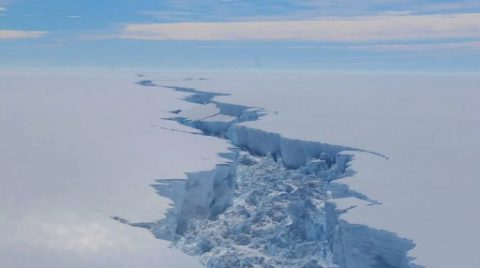
MIAMI, United States (AFP) — Human-driven climate change may substantially alter the seabed ecosystem in the already fragile Antarctic, slashing the diversity of some species and allowing other populations to explode, researchers warned Thursday.
The findings of a field study designed to mimic real-world conditions in a warming ocean were published in the journal Current Biology.
The experiments, undertaken in marine shallows around the British Antarctic Survey’s Rothera Research Station, showed some species actually doubled when warmed one degree Celsius.
The scientific literature until now has suggested that this level of warming would lead to species growth of just seven to 12 percent.
“I was quite surprised,” said researcher Gail Ashton of the British Antarctic Survey and Smithsonian Environmental Research Center.
“I wasn’t expecting a significant observable difference in communities warmed by just one degree Celsius (almost two degrees Fahrenheit) in the Antarctic.”
For the experiment, scientists placed a series of heating panels along the seabed.
Fed by an electrical current, the devices warm a thin layer of water by one or two degrees Celsius above the current water temperature.
Then they watched to see how small, encrusting ocean critters — sometimes called moss animals — would attach themselves to the panels, coating them as they would the natural seabed.
Known alternately as the “encrusting community,” or as “marine biofouling,” these animals include bryozoans and calcareous tube-dwelling polychaetes.
They can be a nuisance, and a costly one at that.
According to the British Antarctic Survey, the global cost of preventing marine biofouling was estimated at $15 billion for desalination systems and power plants, and $7 billion for shipping worldwide.
But encrusting animals are important from an environmental perspective because they colonize the seabed, where most polar species live, and changes in their makeup could affect other species, too.
Researchers describe them as a “sentinel species” when it comes to monitoring the effects of climate change.
During the nine-month experiment to heat the water one degree Celsius, “a single pioneer species of bryozoan (Fenestrulina rugula) took off,” said a summary of the research provided by the publisher, Cell Press.
“That one species ultimately dominated the community, driving a reduction in overall species diversity and evenness within two months.”
Meanwhile, a marine worm called Romanchella perrieri exploded in size, growing an average of 70 percent bigger than those under current conditions.
A greater variety of changes were seen under the two degree Celsius experiments.
“We observed that warming projected for the next 50–100 years strongly accelerates invertebrate growth and colonization rates,” said the report.
© Agence France-Presse








